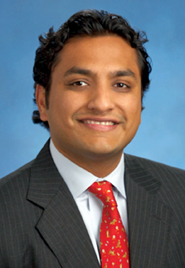Execution management system vendor Redi Holdings and order management system vendor Citadel Technology are working together to build a combined order-execution management system. So far, this has proved an impossible task for industry vendors although some have managed to tie together an OMS with an EMS via a FIX link. Rishi Nangalia, Redis chief executive officer, sat down with Traders Magazine to discuss the benefits of a combined system.

Traders: What is the state of the art when it comes to the OEMS?
Rishi Nangalia: Typically when an OMS and EMS connect, it is through a FIX connection. They are two distinct pieces of software where the only link is a FIX staging link.
Traders: Vendors have been trying to merge the OMS with the EMS for years. It must be a tough task.
Nangalia: Its been tried, but the challenge has been in producing a piece of software where the user has a seamless experience.
Traders: How about REDI?
Nangalia: REDI has made three attempts at this before with three very well-established players in the market. We tried to do something beyond a FIX staging and it did not work out right away.
Traders: It will be different this time?
Nangalia: Yes. The REDIPlus EMS and Citadel Technology OMS Core systems are so similar in their design principles, when typically, OMSs and EMSs are not. The EMS is messaging and event driven and the OMS is database driven. Citadels technology is more of an event-based architecture than traditional database driven architecture. Plus, the software framework they have used is very similar to the software framework that REDIPlus is based on.
Traders: Where does the project stand now?
Nangalia: REDI and Citadel Technologies collaboratively produced a prototype where we integrated the platform at three levels: the GUI level, where the two systems look like they are part of the same software; the FIX level; and a more direct interface with each for things like compliance rules.
Traders: Does this version have users?
Nangalia: Yes, we have a couple of our clients using the platform now.
Traders: What is the next step?
Nangalia: Our goal by early next year is to go for this deeper, richer integration
and to bring this seamless technology to more of our clients.
Traders: Whats wrong with just a FIX link? Whats the added benefit of a single integrated system?
Nangalia: Its workflow. So, initially the OMS and EMS didnt directly communicate. Then FIX came around to perform basics to eliminate some double-keying, but it did not enable the two systems to actually work seamlessly where you click on one symbol and the entire EMS changes, where your screen becomes contextual to your open order.
Traders: So the two work together as one.
Nangalia. Yes. With an integrated system, you click on a symbol in the OMS and the EMS screens change to show you all the open orders, TCA, or charting associated with that symbol, rather than double-keying the order in two systems.
Traders: Can you give us an example?
Nangalia: Assume a compliance rule change in the OMS, which in turn changes the behavior that is allowed by the EMS. For example, a portfolio manager will load his orders in the OMS blotter then move those trades into the EMS, and then trade them. Lets say a compliance check happened at that point. Without a seamless trading platform, the OMS does not inform the EMS that the compliance rules have changed. So, the trader has to cancel the order out of the EMS; restage it from the OMS; and then go back and redo his actions.
Traders: But if it were seamless . . .
Nangalia: The OMS would inform the EMS that the rule has changed, and only allow the EMS to execute orders that are complaint with the updated rules.




